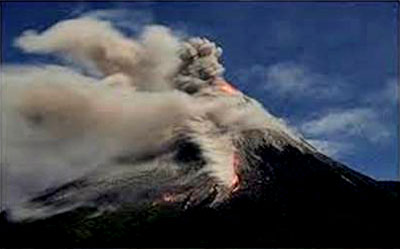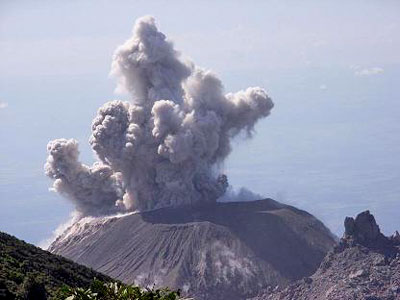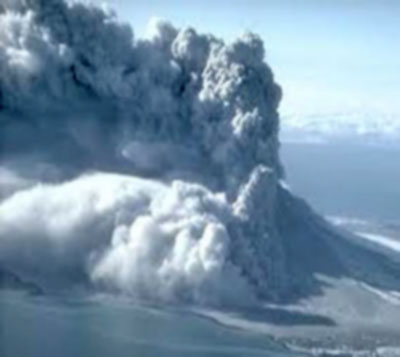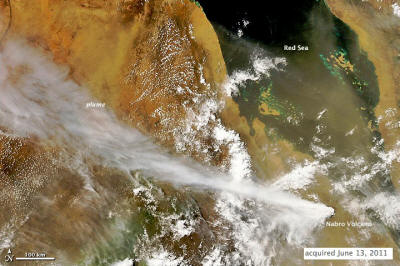|
Director 15 June 2011 from IMVA Website
with its mushroom
cloud bursting towards the skies
about 575 miles south
of the capital, Santiago Chile Several Latin American countries in the path of volcanic ash unleashed from a Chilean Andean crater are facing critical shortages of water, agricultural collapse, disruptions in transportation and growing risks to human and animal health.
Toxic ash clouds, seen to be dispersing
toward Australia, have dumped the powdery substance across vast
swathes of territory in Chile, Argentina, Brazil and Uruguay. And it
blowing all the way around the southern hemisphere!
Chilean volcano Puyehue-Cordón Caulle continues to throw an ash cloud into the southern hemisphere, which has now circled the globe and threatens to affect more flights.
Passengers to other airports on New Zealand’s South Island and lower North Island are also likely to be affected, with ash cloud predictions from the Wellington VAAC also covering Wellington.
Ash is forecast at 20,000-35,000 feet
across the entire South Island and much of the southern North
Island, including the capital, Wellington. June 11, 2011 - Chile Puyehue-Cordon Caulle volcanic eruption heats Nilahue River- leads to death of 4.5 million fish.
The river has turned
into a black slime. The volcanic firestorm erupting across the world is a sign that the planet is now tilting towards geological upheaval.
The magnetic reversal is accelerating
and the sea-floor under the Pacific Ocean is spreading.
Earthquakes are increasing around
Japan and in the Pacific Ring of Fire and the Pacific plate is now
experiencing increasing amounts of seismic tension. We are on the
eve of witnessing destructive geological changes to this planet
unknown in our lifetime.
These are only the visible volcanoes though; there are thousands of underwater volcanoes. We see some possible evidence of one as fish are continuing to die in large numbers in the Arabian Gulf waters, reports Al-Mustaqbal daily.
Kuwaiti expert on the impact of climate changes on Kuwaiti marine
environment Dr. Thamer Al-Rasheedi said test results showed a
remarkable rise in temperature of sea waters compared to the
previous years.
Seems to me the inner earth is exploding
up incredible amounts of toxic materials into the atmosphere and
waters, materials from our planet’s bowels and this stuff just does
not sit too well with biological life. June 4, 2011
Poisonous gases
spewing from
Mount Dieng in Central Java Etna volcano in southern Italy May 12, 2011
Santiaguito volcano in Guatemala May 7,2011
Tungurahua Volcano - Bańos, Ecuador April 26, 2011 Shinmoedake volcano Southern Japan March 13, 2011
Manila, Philippines
Mount Bulusan’s ash
explosion
Mount Kirishima volcano
Japan January, 2011
Most Recent Eruption
The
Anabro (Nabro) volcano in the
Northern Red Sea Region of Eritrea in Africa then erupted sending an
ash plume more than 13 kilometers (8 miles) into the sky.
And today as I finish this essay a
series of powerful tremors rattled the quake-prone New Zealand city
of Christchurch on Monday, destroying buildings and sending boulders
tumbling down hillsides nearly four months after a quake killed 181
people.
These images above all show huge
plumes of sulfur dioxide spewing into the air. As their
eruptions continue sulfur dioxide levels will increase as well as
sun blocking particles that will have a cooling and polluting
affect.
Sulfur dioxide emissions are a precursor to acid rain and atmospheric particulates.
|













